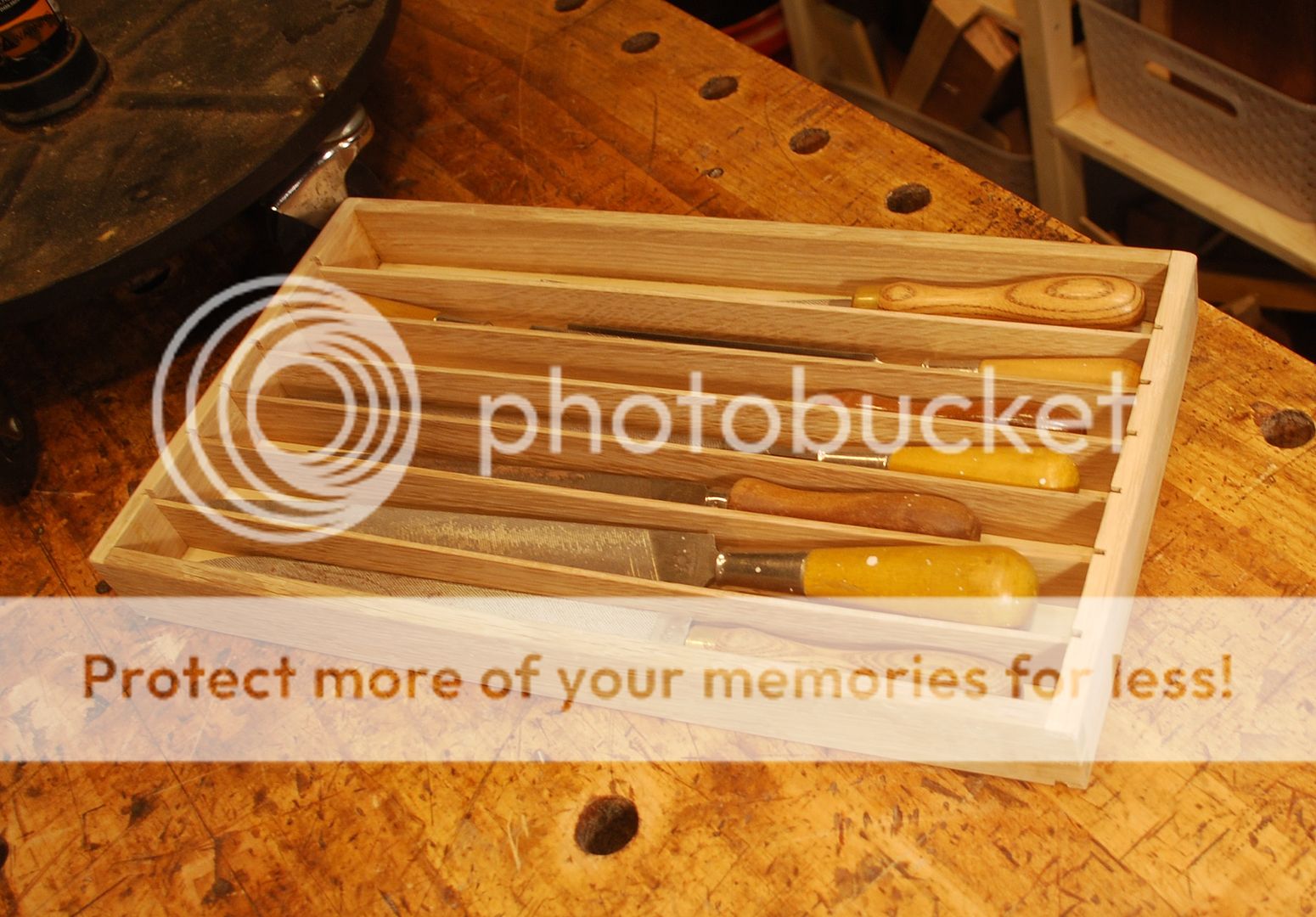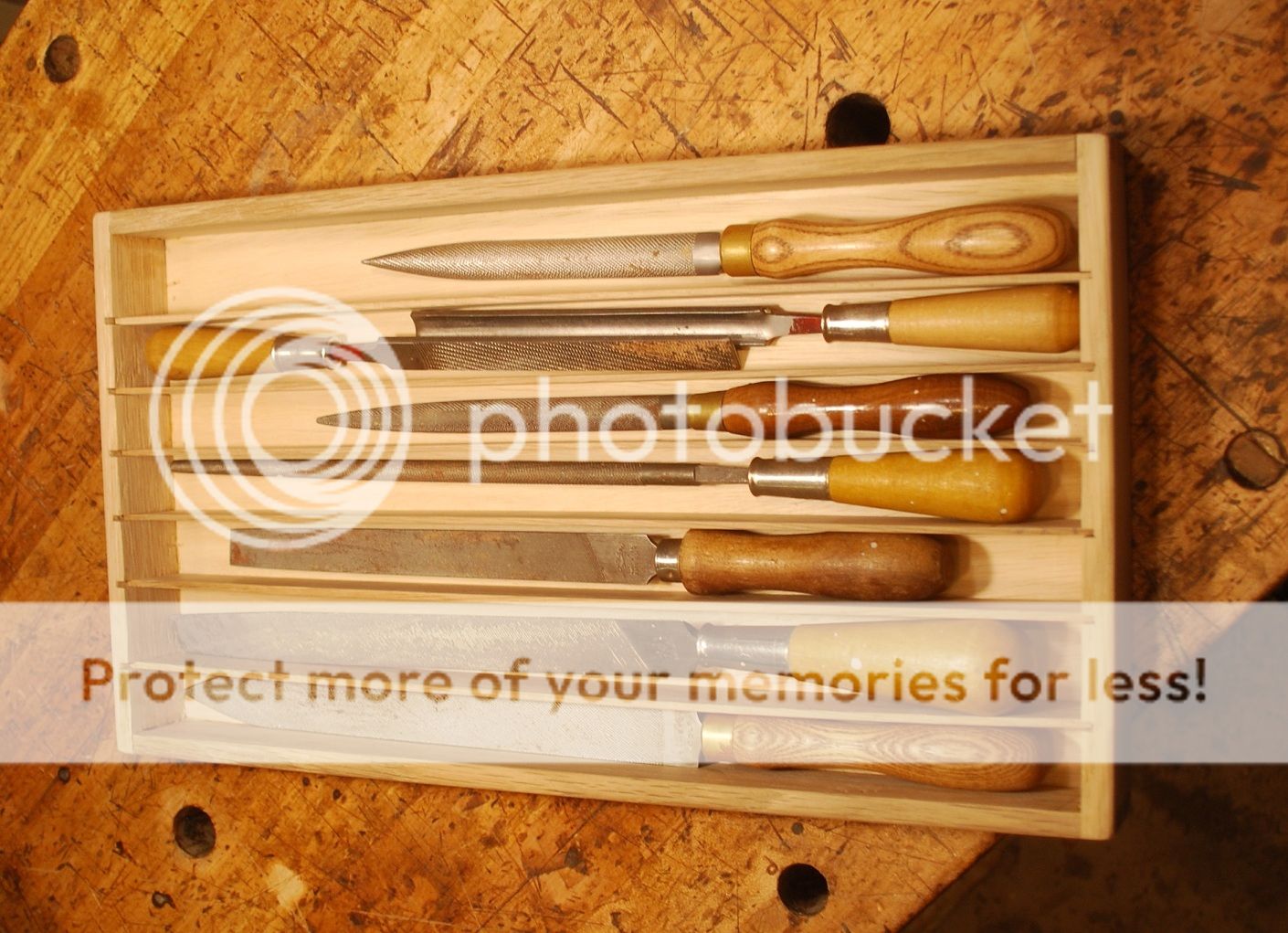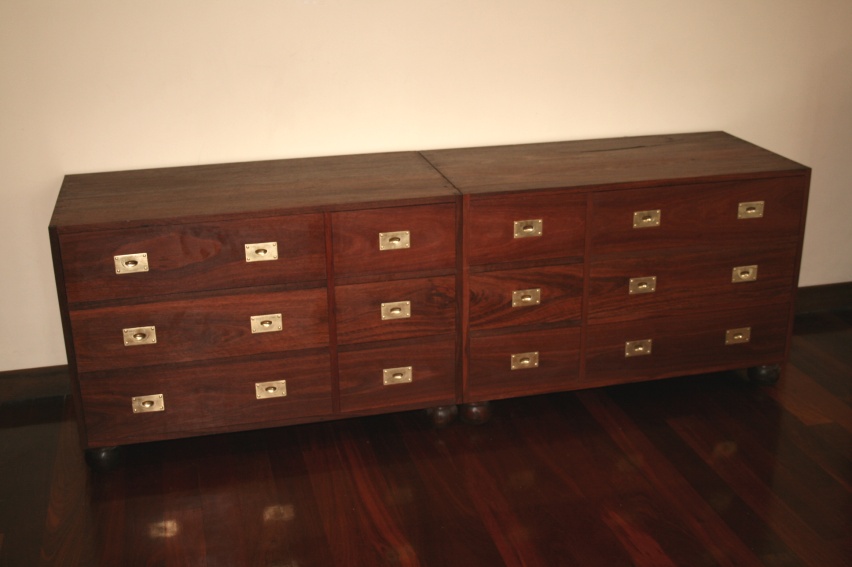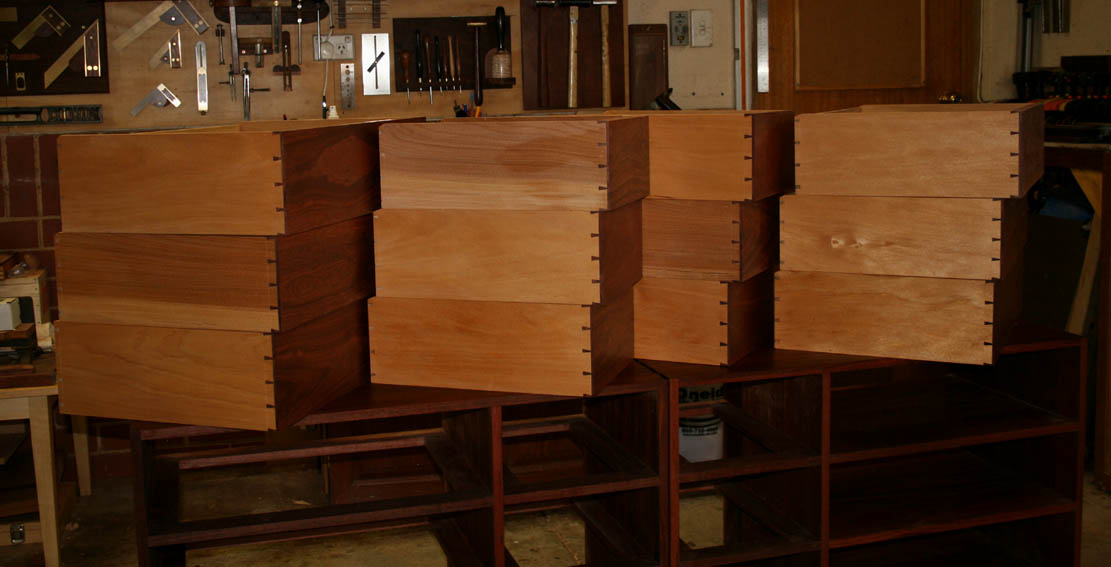In between projects I like to do a little “shop improvement” – something simple and fun that helps keep things organized or the shop to run more efficiently. Often it’s a tool, shop appliance or storage. In this case a small dovetailed tray to organize rasps and files about 15” long by 9” wide, made of some 3/8” thick QSWO scraps.
Because it’s only shop storage and only has to function not necessarily look good, I wanted to see how quickly I could get to a finished product by perhaps skipping steps in my normal box building/dovetailed process.
Watch pic for official start time: I started dimensioning the stock, ripping to width on the bandsaw. Only real time savers here were ganging the 4 sides together to plane to common width simultaneously, and crosscutting, shooting to sides at time.
For prominent or show surface DTs, when setting the marking gauge to layout baseline, I usually reset gauge for the thickness of each piece. In this case to save time, I just went with the same setting for all 4 pieces, and only marked the outside/show surface. In stock only 3/8” thick, I’ll just chop the pins/tails all the way through working only from the show side, instead of flipping work piece over to work from both sides towards the middle, my usual practice.
My usual practice is to layout tails with pencil, 8:1 dovetail marker and use dividers and a chisel for spacing. I try to be fairly casual about laying out tails working from half pins on the sides towards the middle. In this case, ganged 2 corresponding sides together and just eyeballed the placement and slope of the tails without layout lines. Theoretically, and in reality this is pretty easy – even if the slope or placement of the tails isn’t exactly where you want it, doesn’t matter - you simply mark out the pins corresponding to wherever your tails end up for nice fit and go on your way. Easy for me to say! as you can see, I had “dovetail geometry dyslexia” and sawed the shoulder of the dovetail on the right, sloped in the wrong direction – I hate when that happens! Fortunately it only took a couple seconds for visual memory to kick in - “hey it’s not supposed to look like that right?”, And I re cut the shoulder in the right direction.
Other timesaver was per coaching from Derek Cohen, making an effort to saw out pins as close to the baseline as possible. Normally I shy away from this for fear of over cutting the baseline. But I found taking the extra time to bend over and site the plane of the fret saw blade against the baseline more than made up for itself in time savings chopping out pins/tails.




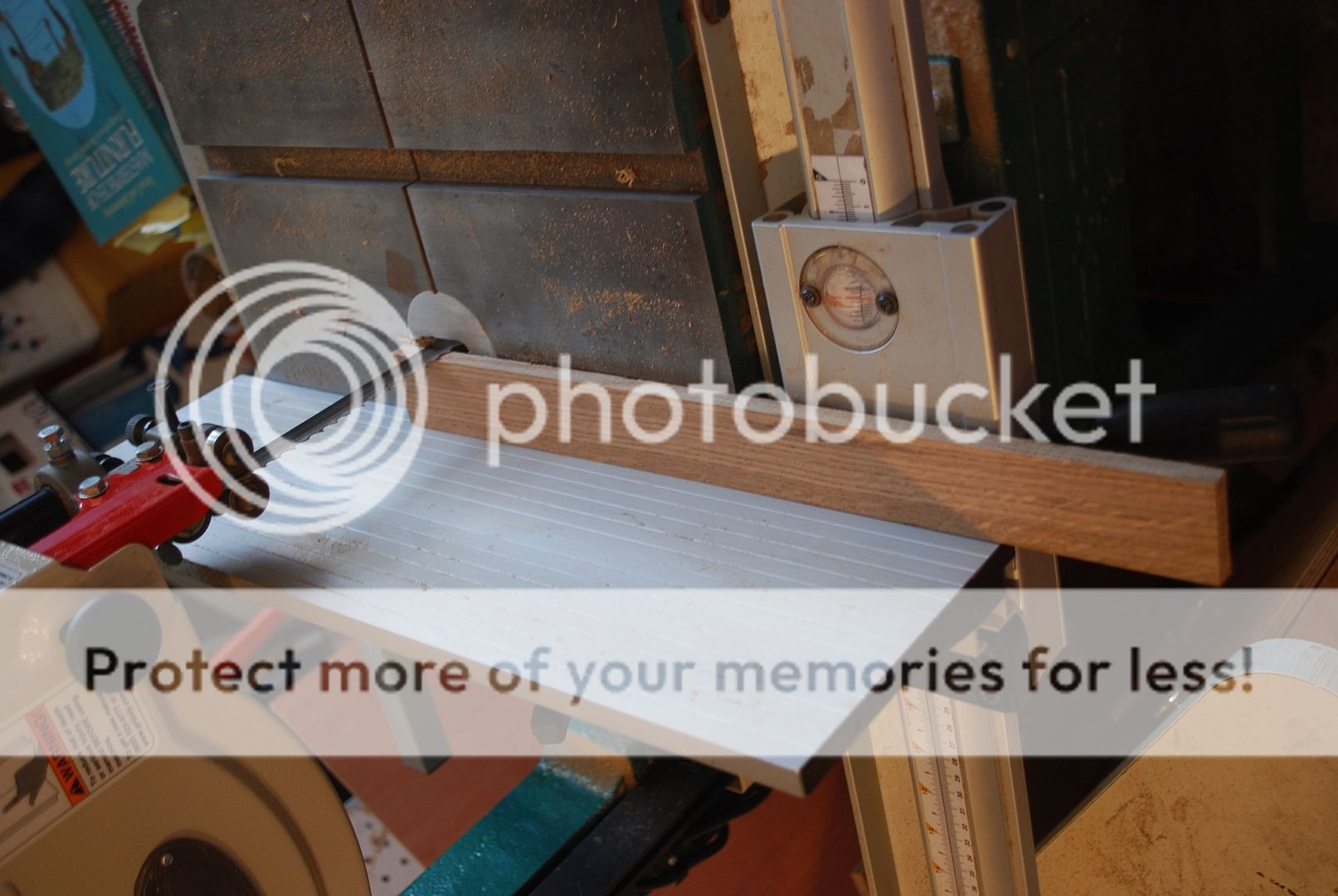


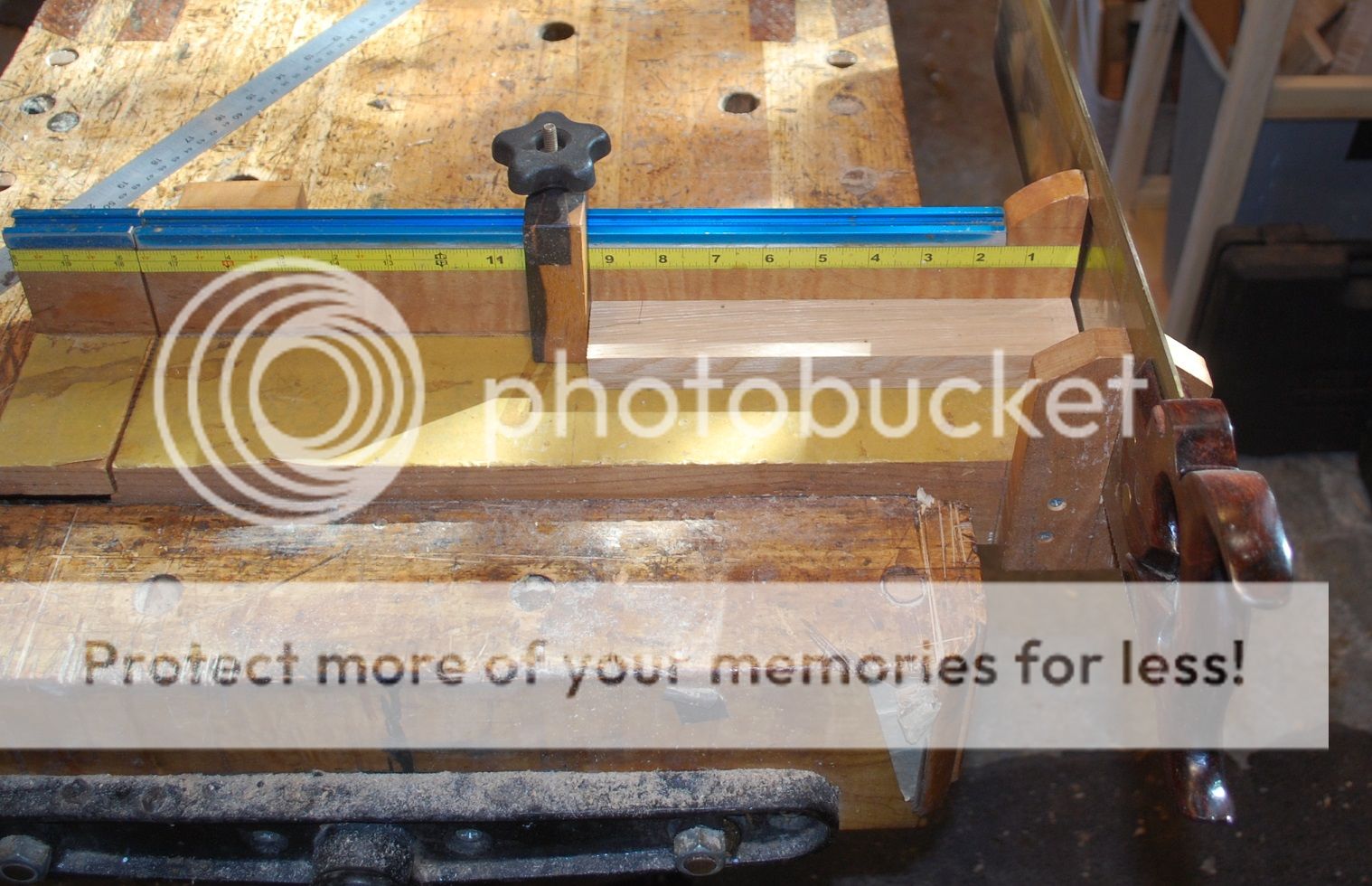
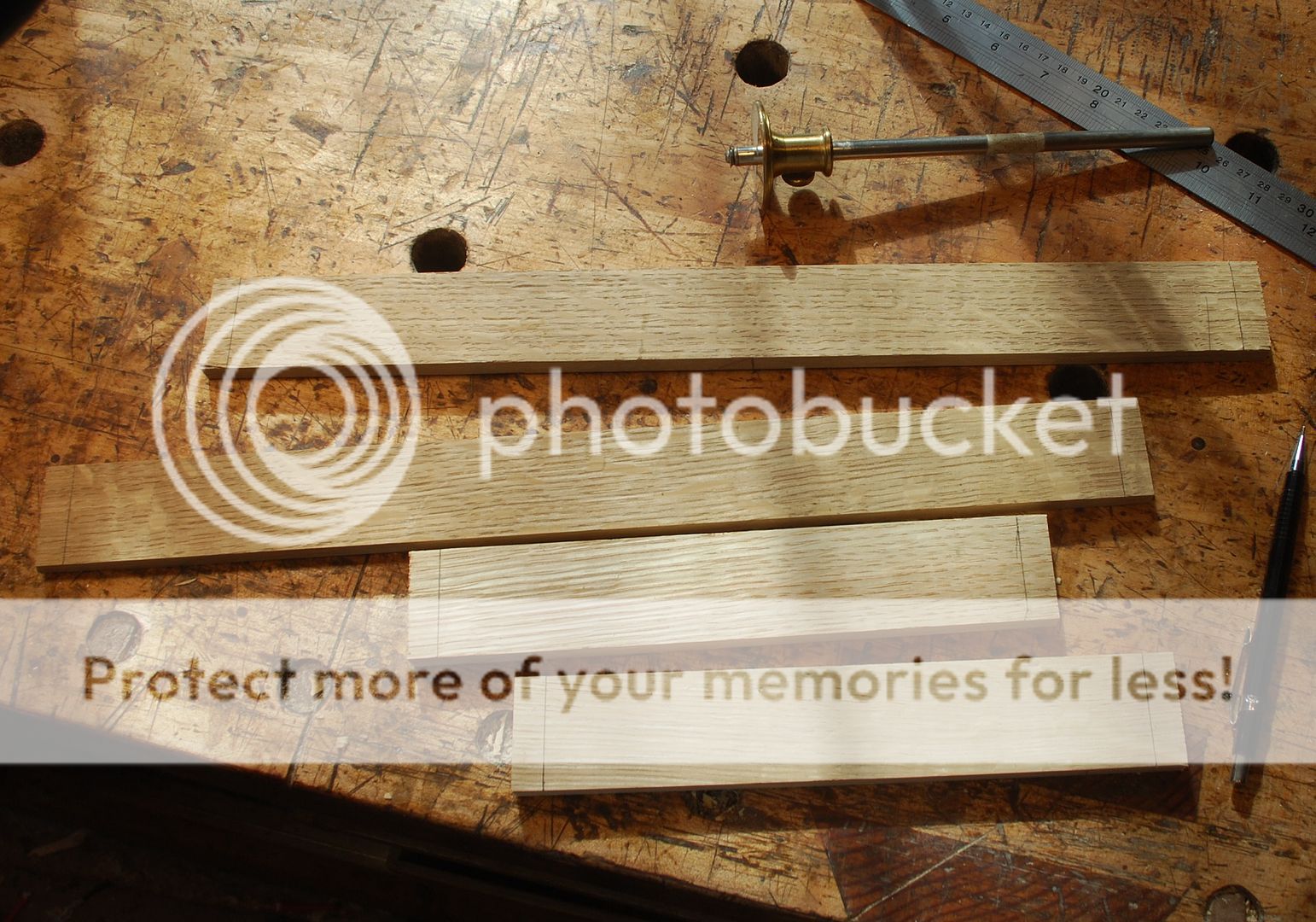


 Reply With Quote
Reply With Quote





